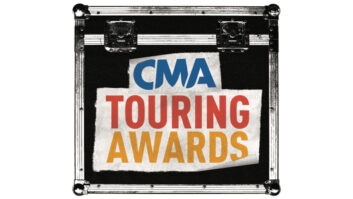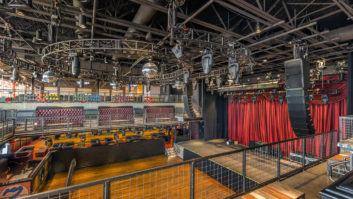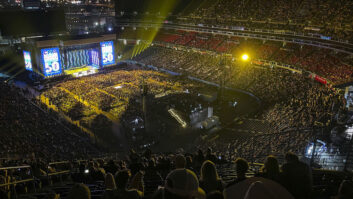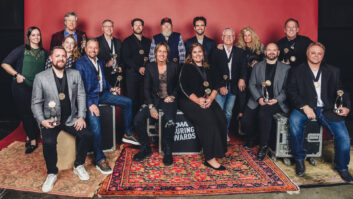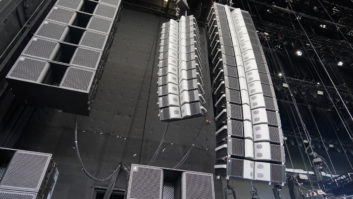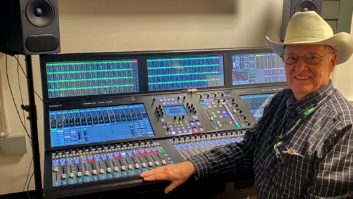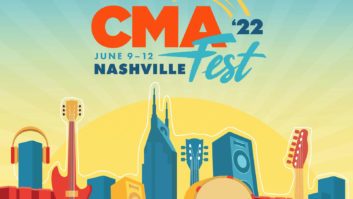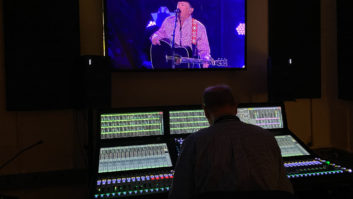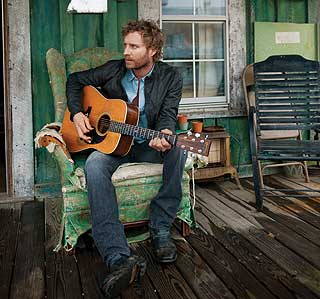
Country singer/songwriter Dierks Bentley’s fifth album comes as a wonderful surprise. Whereas his previous records offer an appealing, modern take on classic country (like Waylon or Merle, only shinier), Up on the Ridge digs deeper. This time, Bentley and a stellar cast of bluegrass musicians and guest vocalists have really bent their roots, adding drums, vocal effects and an aggressive approach to old-time music.
Tracking for Up on the Ridge traveled a path from Nashville to New York and back. The earliest sessions took place in fall of ’09 in Blackbird Studio D, where Bentley and producer/musician Jon Randall Stewart gathered some of Music City’s finest musicians: Bryan Sutton, guitar; Sam Bush, mandolin; Rob Ickes, fiddle/harmony vocals; Stewart, guitars/harmony vocals; Glen Worf, bass; and John Gardner, drums.
At Blackbird, Stewart and engineer Gary Paczosa captured songs such as Kris Kristofferson’s “Bottle to the Bottom” (to which Kristofferson would later add his own vocal) and Buddy and Julie Miller’s “Love Grows Wild.”
“Jon Randall Stewart has made records as a producer; he’s an artist, he’s been in Emmylou [Harris’] band, and he’s been on all sides of country and bluegrass,” Paczosa says. “He’s a great musician, so especially when it comes to harmony vocals he has great ideas and is always ready to experiment. On that session, we probably had six guys on the floor, so most everything on those tracks was cut live. On all three of these session dates, I kept everybody closer together without much isolation. I tried to get more interaction between the musicians and more room sound.”
Paczosa recorded everything to Pro Tools. He says that because he’d worked with Bentley before on a Stringdusters release, he went in with a sense of how best to capture Bentley’s vocals: a BLUE Bottle mic with the B6 capsule into a Mastering Lab preamp using a GML EQ. “Most of the keeper vocals came after the band sessions, but we used probably 30 percent of what he sang live. We made sure to always have a great signal path on him.”
Paczosa also made it his practice to put up a stereo pair of room mics—usually ribbons, whatever he felt suited the song—a good stereo pair and what he calls a “character mic” on each instrument: “There was always something that was funky. That was part of how we were able to get things to sound edgier later in the mix: by compressing and really tweaking whatever garbage mic I had up. Some of these were microphones from my kids’ toys—karaoke stuff, whatever.”
The project took a month-long break before moving on to Brooklyn Recording, where Bentley recorded with contemporary bluegrass band the Punch Brothers. “That session was cut with everybody live in one room, except I isolated the bass,” Paczosa says. “I had them lined up in the same configuration they use onstage, with Chris Thile [mandolin/vocals] in the middle. We definitely wanted to catch them live. There’s drawbacks to that with leakage because they stand so close together, but the energy we got was worth it.”
One of the most surprising song choices on the album was made with the Punch Brothers: U2’s “Pride.” “[Dierks] always wanted Del McCoury on ‘Pride.’ That was actually the first song he thought about for this record. Dierks had just always heard this as a great b
luegrass song, but knew that it had to be Del up high.”
Three days of tracking in Brooklyn were followed by another month’s gap to accommodate Bentley’s touring schedule and other projects. Then another set of songs were cut in Nashville at Sound Emporium, where multi-instrumentalist Tim O’Brien and fiddle player Stuart Duncan joined the “band.” This final group of recordings included the title track, “Up on the Ridge,” which features backing vocals by Alison Krauss.
“On that song, the character mic was a Copperphone, which is a really radio-sounding mic, very nasally; it’s a real effect. That mic sounds great with the Vintech X73 and compressed with the Sta-Level Retro compressor.”
Paczosa says that by the time the project got to Sound Emporium, the full idea of how this album would be different from straight-ahead bluegrass was well-developed. “You always try to make these things happen on the floor,” he says. “You don’t want to lean on the mix, but some of those tracks did get more aggressive with more overdubs, like ‘Up on the Ridge,’ especially with that slight mandolin part that completely changed the tone of that track. Everything had to get meaner. A couple of the tracks were a little sweeter when we started out, and the drummer played with brushes, but by the time we loaded on more overdubs and vocals, the tracks took on a more aggressive tone, so at that point you might be wishing you recorded with sticks.”
Paczosa did overdub some kick drum parts, as well as additional strings. Also added were the guest vocal parts by Kristofferson and Krauss, plus others by Miranda Lambert and Jamey Johnson (“Bad Angel”), Vince Gill (“Fiddlin’ Around”) and Sonya Isaacs (“Down in the Mine”).
Paczosa mixed the album in his personal studio, Minutiae (Nashville), where he dumped all of the Pro Tools tracks into Nuendo. “I’ve also got the Yamaha DM2000,” he says. “I would say I mix half in the box and half outside the box. I definitely try to get some analog flavor; my two mix inserts are the Manley Vari-Mu [compressor/limiter] and then I’ve got a custom NTI EQ that’s just the air band. I try not to compress too much; I’m just looking for some analog smear. Plus, I master with Doug Sax, and his chain is just a beautiful signal path.
“I would say that the sound of the album follows the tone and the character of Dierks’ voice. Since he’s the centerpiece of each song, and he sounds gritty and gravelly for a lot of these songs, you have to shape your other instruments around that.”
